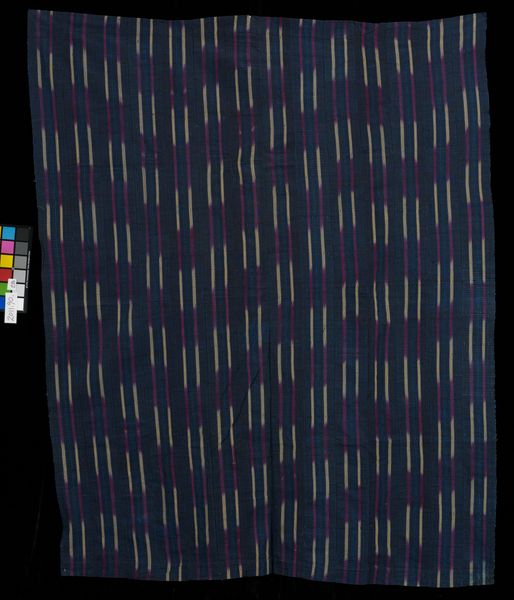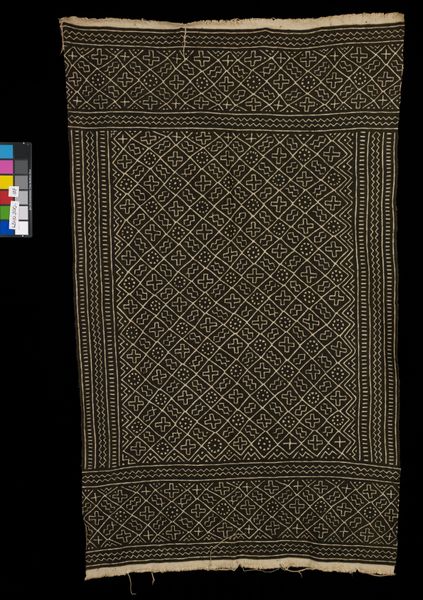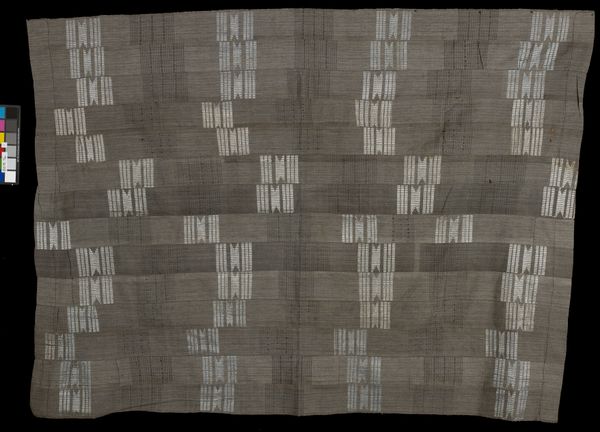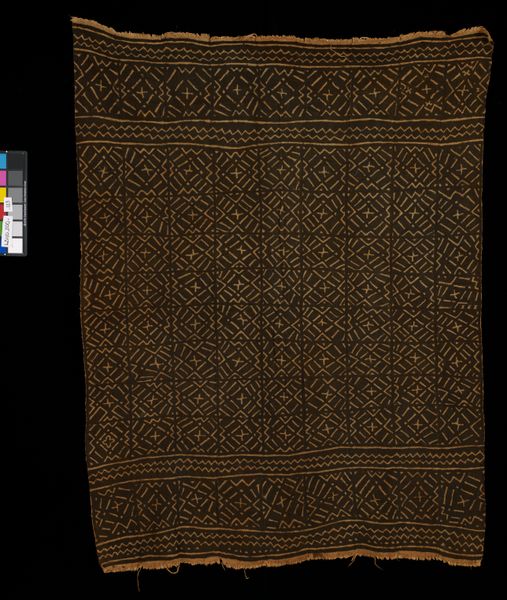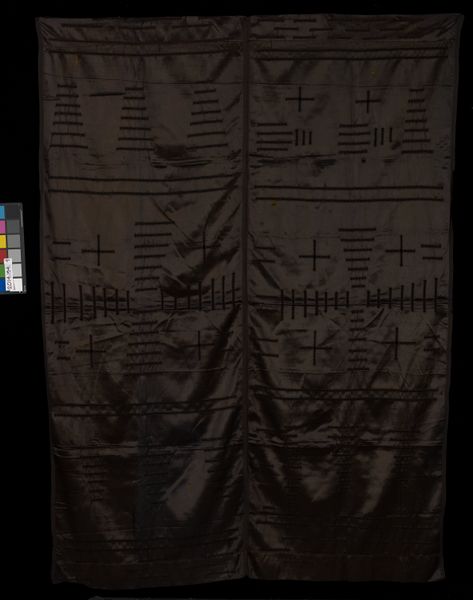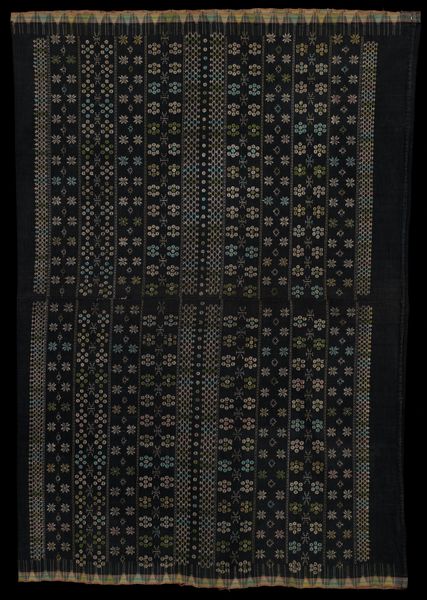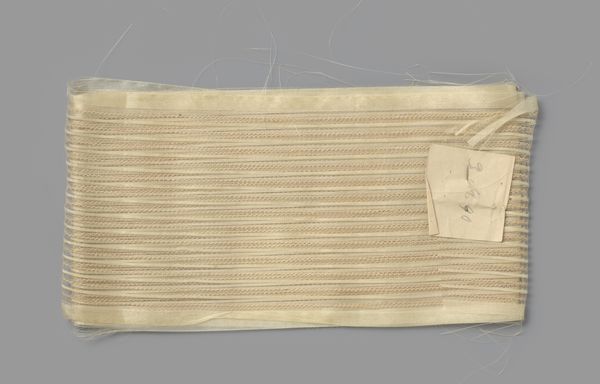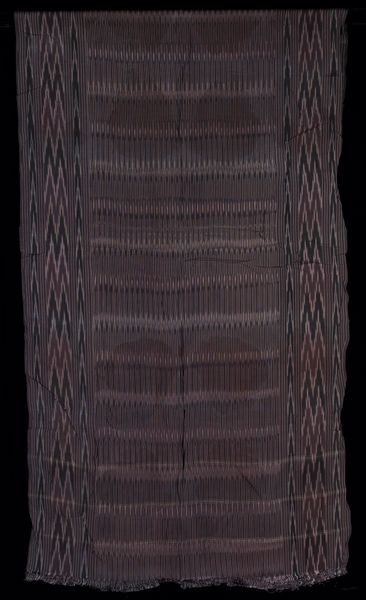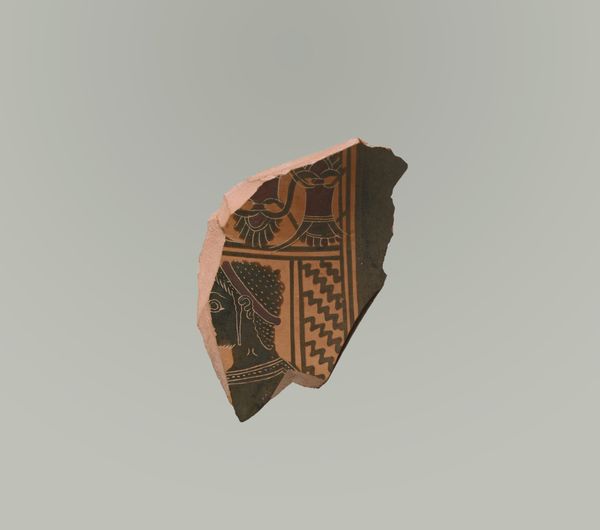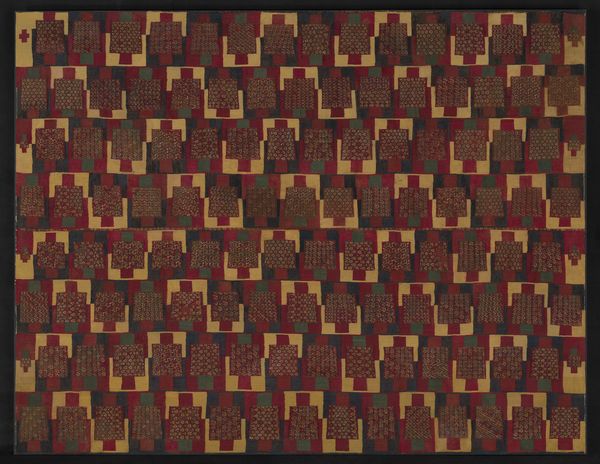
fibre-art, weaving, textile, cotton
#
african-art
#
fibre-art
#
repetition
#
weaving
#
textile
#
fashion and textile design
#
geometric
#
line
#
cotton
#
textile design
Dimensions: 62 x 43 1/2 in. (157.48 x 110.49 cm) (excluding fringe)
Copyright: Public Domain
Curator: Here we have a Mud cloth skirt, of unknown date, housed here at the Minneapolis Institute of Art. It seems to be textile based. Editor: My initial feeling is of stark simplicity; those strong, vertical lines create a rhythmic pattern, almost like a musical score. Curator: Let's delve into its materiality. Crafted from cotton and executed through weaving and fiber art techniques, this skirt immediately brings up questions of production. Who spun the cotton? Who wove the cloth? What was the division of labor? It pushes us to consider the craft aspect of so-called “high art”. Editor: I see the geometric divisions created by horizontal lines that interrupt those bold vertical stripes. This instantly evokes the structure of a traditional society or a family tree: ancestors connecting descendants through these visual "lines." How are women in those families represented in this art? It feels like the skirt carries familial hopes or stories. Curator: Precisely. The making process – dyeing, weaving, assembling – these would carry stories, rituals specific to the maker and owner, encoded labor itself. This is more than just clothing. Editor: The fact that this skirt utilizes a form of abstraction also intrigues me. There isn’t a straightforward representation of a figure or animal; rather, those straight and zig-zag lines might symbolically represent traits, stories or hopes for its owner and their place in community. Curator: Agreed, but it's the consumption and ownership that interests me further. Consider the work that is put in here: this piece gains economic significance in a gift economy; who gets access and gets to wear these patterns speaks about how value circulates. Editor: We might never unlock the complete history that lives within this fiber, but this piece lets us appreciate symbols and culture transferred. Curator: True. Viewing this from the ground up shifts our focus to people and processes of production, rather than merely individual artistry. Editor: Indeed. Approaching this skirt with symbology in mind gives us a lens into visual narrative—what stories the imagery has to tell from history into the future.
Comments
No comments
Be the first to comment and join the conversation on the ultimate creative platform.
